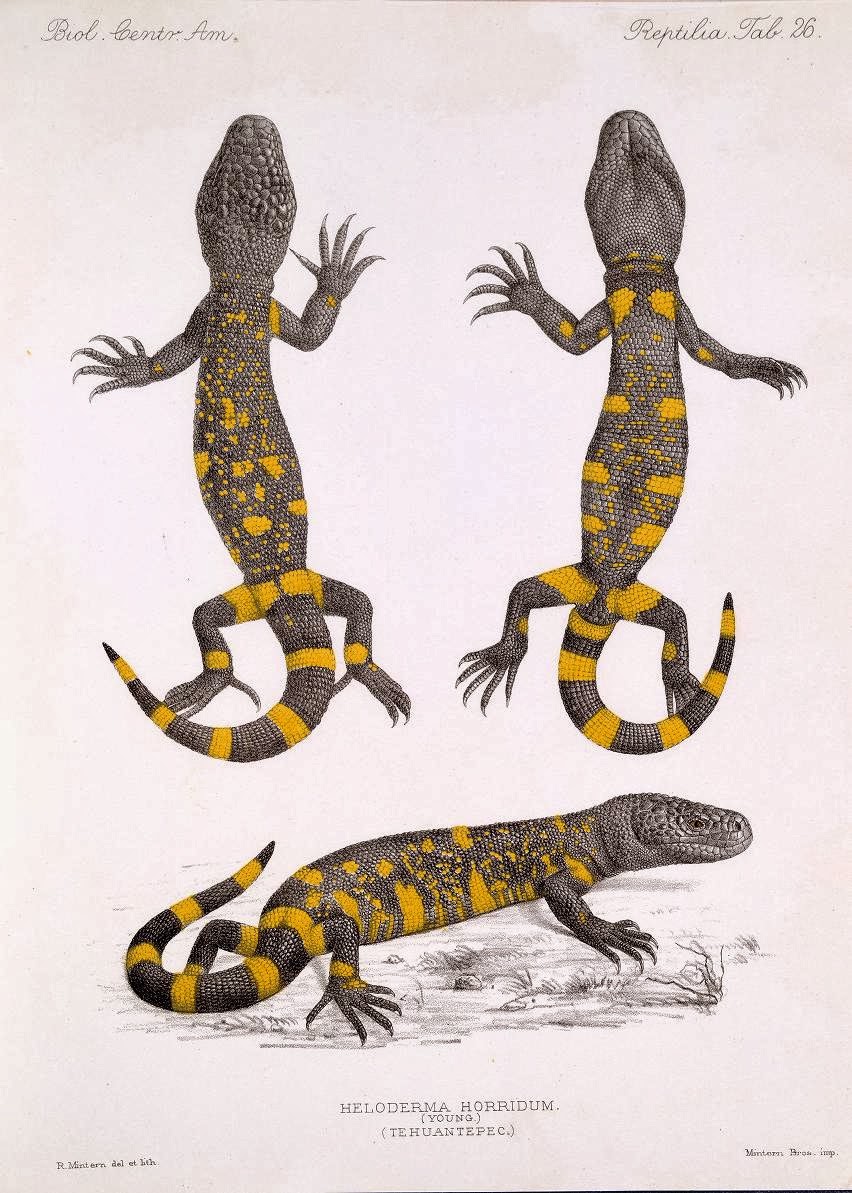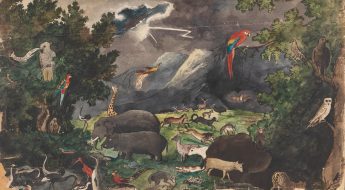Book of the Week: Biologia Centrali-Americana : Reptilia and Batrachia
 |
|
The total number of known amphibian
species is approximately 7,000,
of which nearly 90% are frogs.
Image: Venture Galleries |
My first encounter with an amphibian was the all but loveable Kermit the frog from Sesame Street. While reptiles and amphibians are not warm and cuddly like Kermit, these ectothermic vertebrates (cold-blooded) are incredibly interesting. Some of them breathe through their damp skin. They are incredible predators. Most species have super sensitive hearing that can detect airborne or ground vibrations, and their tongues are super muscular.
Pioneers in the documentation of these creatures were Frederick Godman and Osbert Salvin the authors of Biologia Centrali-Americana : Reptilia and Batrachia, one volume in a 63 volume set called Biologia Centrali-Americana. Godman and Osbert set out to create the most comprehensive account of the flora and fauna of Mexico and Central America by hiring many local experts to collect specimens for study. They published the set over the course of 36 years.
 |
| Certain frogs can jump up to 20 times their own body length in a single leap. |
The entire set includes over 900 illustrations. Published between 1879-1915, Biologia Centrali-Americana : Reptilia and Batrachia, focuses on retiles and amphibians and is key to early discoveries in print of a variety of species.
 |
| Nearly all reptiles lay shelled eggs. |
Browse through more of the illustrations from the book of the week in the BHL Flickr here.
Unknown. (n.d.). Micrurus nigrocinctus black-banded Coral Snake. Encyclopedia of Life. Retrieved from http://eol.org/pages/1055826/details
Unknown. (n.d.). Fun Reptile Facts for Kids. Science Kids. Retrieved from http://www.sciencekids.co.nz/sciencefacts/animals/reptile.html






Leave a Comment